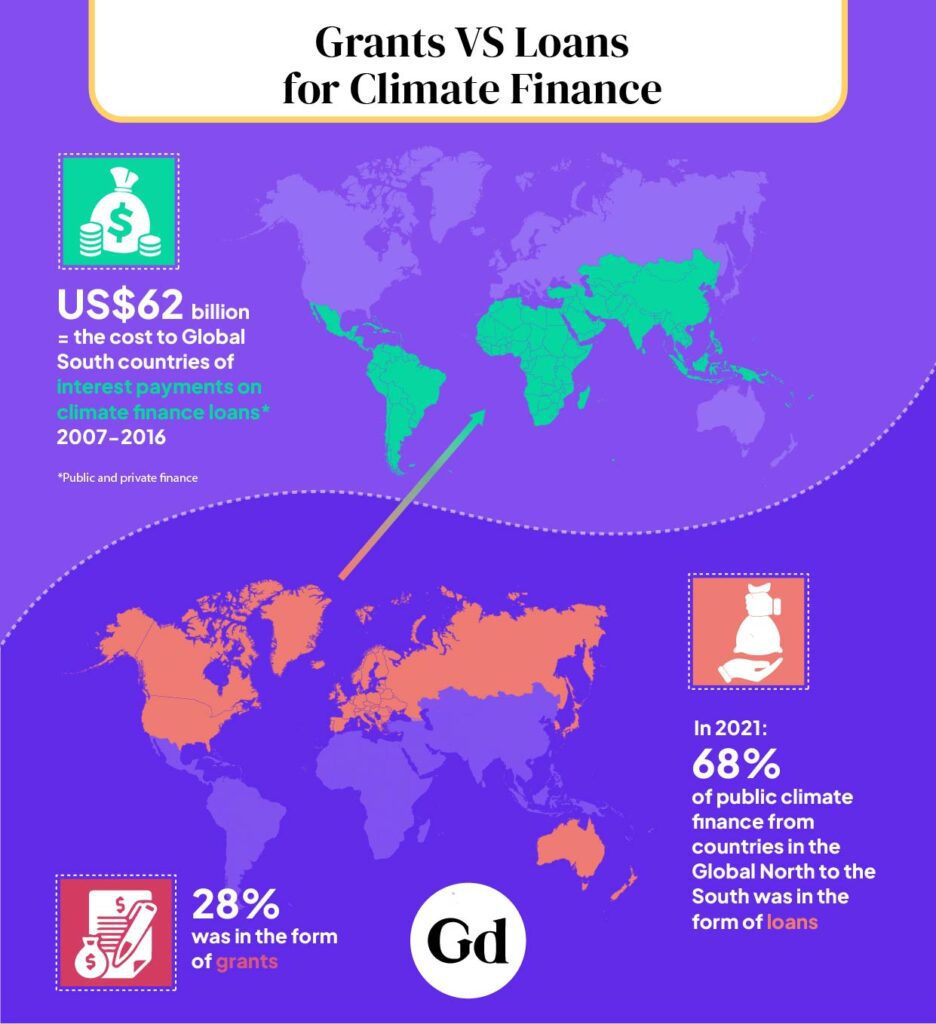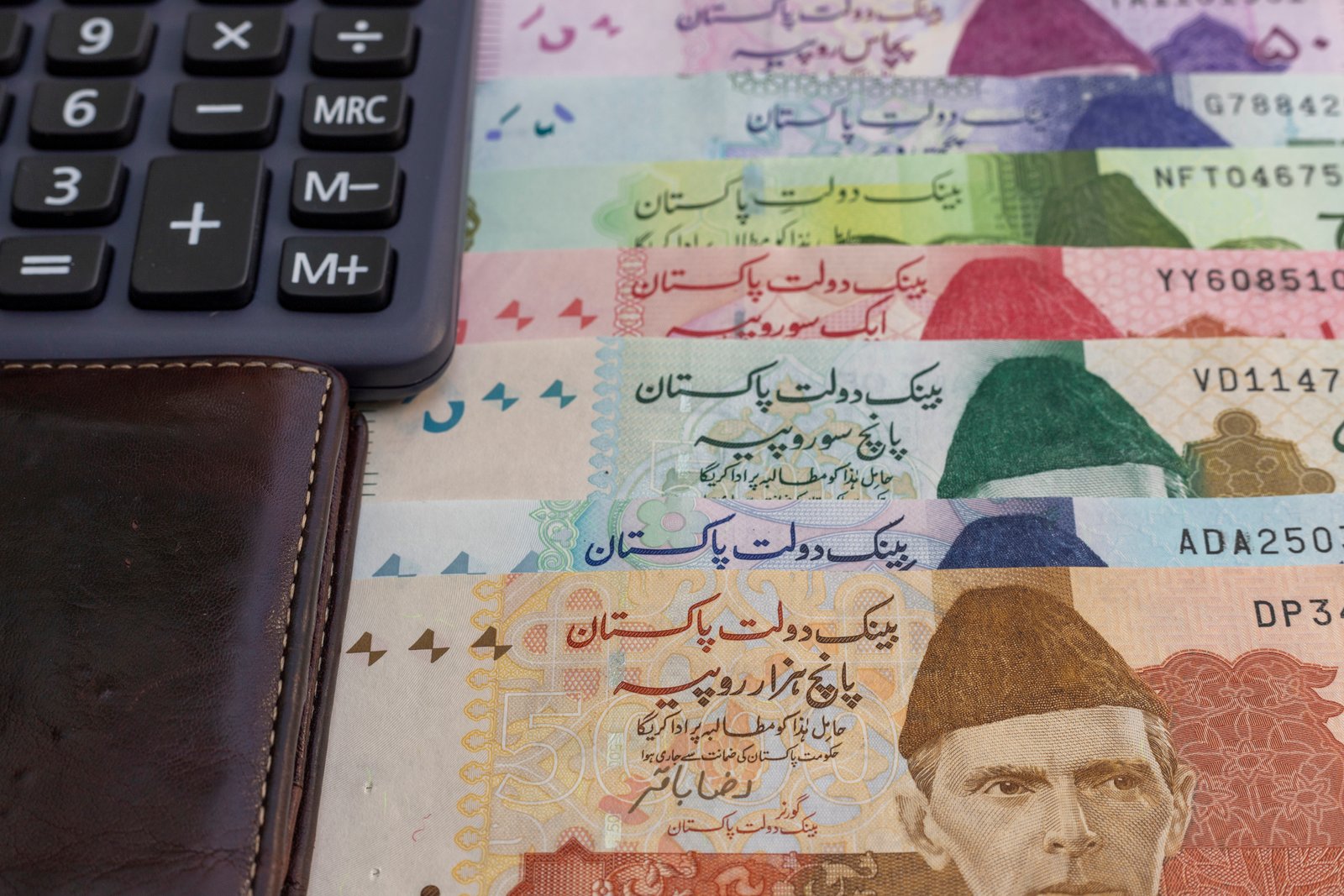Most climate finance for countries in the Global South is in the form of loans that come with high interest payments. Providing loans rather than grants increases debt levels and makes it even harder for these countries to tackle climate change. This blog outlines the impact of climate finance loans and why grants are essential to Global South countries implementing robust climate measures.
What have loans got to do with climate finance?
Countries in the Global North provide most of their climate finance to countries in the Global South in the form of loans. OECD figures show that in 2021, US$49.6 billion (68%) of public climate finance from countries in the Global North was loaned. Conversely, grants amounted to just US$20.2 billion (28%) in value. These figures follow a long-term trend, whereby loans amounted to more than 70% of public climate finance between 2016 and 2021.
In the context of increasing interest rates, these loans make the cost of tackling climate change even more substantial. A report commissioned by UN Environment found that a country’s vulnerability to climate risks increases the cost of debt repayments: adding US$62 billion of additional interest payments (public and private sector) between 2007 and 2016.
This additional ‘levy’ on their climate vulnerability by both public and private creditors, together with the prevalence of climate finance loans, reduces the Global South’s ability to implement robust climate measures that enhance their resilience to climate change and economic shocks. This is particularly concerning given that the current global climate finance goal of US$100 billion has never been met.
Furthermore, countries must repay these loans during a period of increasing debt distress and rising inequalities. According to the United Nations Conference on Trade and Development (UNCTAD), 59 countries in the Global South faced high levels of debt in 2022 and, according to the Debt Service Watch, Global South countries’ spending on domestic and external debt service in 2023 was over 12 times greater than what they spent on climate adaptation.
Indeed, in 2022, the UN General Assembly recognised that using public debt and external borrowing to address disasters could increase debt servicing, constrain growth and reduce capabilities to invest in long-term resilience measures. It highlighted the role of debt relief, including debt cancellation, in preventing debt crises.
The long shadow of multilateral climate finance loans
Debt as climate finance is not a phenomenon limited to bilateral finance flows between countries. Between 2016 and 2020, only 23% of Multilateral Development Banks’ (MDB) climate finance (excluding multilateral climate funds) was concessional (more affordable finance provided at below market rates).
MDBs determine which countries are eligible for concessional climate finance using OECD criteria for climate-related development finance. But the current criteria inhibit Global South countries’ access to both climate-related development finance and MDB finance.
Many countries in the Global South have proposed multidimensional vulnerability indicators (MVI), which define access to concessional finance based on needs and vulnerabilities. Climate vulnerable countries have also issued many calls for climate finance to be delivered in the form of grants. In the meantime, for all countries to have access to climate finance, UNFCCC climate finance goals must be met in their entirety.

The consequences of paralysing loans
Despite the economic and social impacts of high debts, countries that experience climate impacts often have little recourse but to accept loans. For instance, the estimated total costs of Pakistan’s historic floods in 2022 are a staggering US$46.4 billion. However, limited access to grants has led the country to accumulate more debt. At a financing appeal conference in early 2023, 90% of the finance provided to Pakistan was in the form of loans to be rolled out over a three-year period. These loans amount to US$ 8.7 billion of debt hanging over the country, when what Pakistan really needed was grants.
An International Monetary Fund (IMF) analysis of 11 “natural disasters’’ between 1992 and 2016 shows that debt levels increased in Global South countries when the disasters damaged their Gross Domestic Product (GDP) by over 20%. Specifically, it shows that public debt increased from an average of 68% of GDP in the year of the climate event to 75% of GDP three years later. This analysis further supports the case for grants to be prioritised over loans.
As climate change continues to intensify, along with increased financial vulnerabilities and weakened domestic response capacities, climate finance contributors must start to accurately assess the suitability of loans as instruments of climate finance.
UNCTAD has a set of non-binding Principles on Promoting Responsible Sovereign Lending and Borrowing. In the context of excessive climate finance loans and a lack of grants and confessional finance, it would be key to update these Principles and agree on binding rules for responsible lending and borrowing that apply to both public and private financial flows for development and climate finance.
At the very least, climate finance contributors (bilateral, multilateral, private and financial intermediaries) must ensure that lending terms are fair, transparent and designed in a participatory manner. A lack of parliamentary and public scrutiny increases the chances of irresponsible borrowing and lending. This includes the risk of countries accruing debts that are too expensive or which include coercive clauses, such as resource backed loans, where loans are provided in exchange for future natural resources. The consequence is unsustainable levels of debt.
The prevalence of loans in climate finance further entrenches indebtedness in the Global South where countries face record high debt payments. Numerous civil society organisations highlight the need for climate finance to be provided in the form of grants. It is crucial for countries in the Global South to have access to fair debt resolution and grants, so they can implement robust climate measures.







